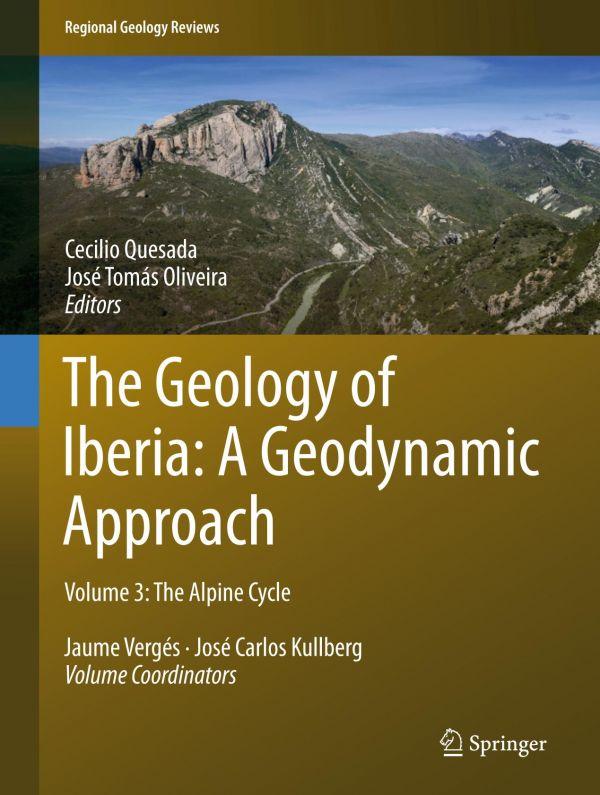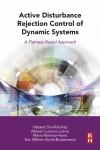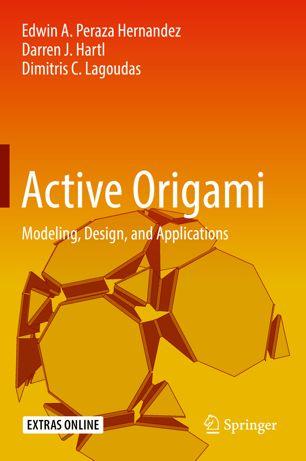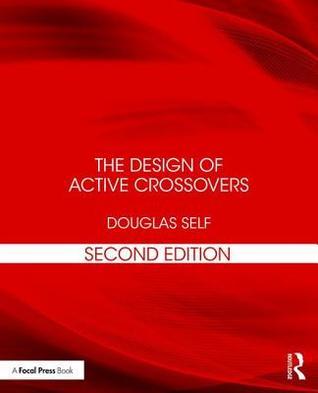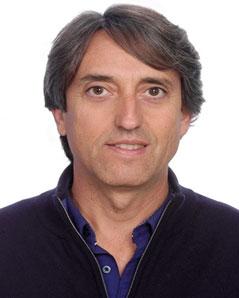The Geology of Iberia: A Geodynamic Approach: Volume 5: Active Processes: Seismicity, Active Faulting and Relief Cecilio Quesada
Visit to download the full and correct content document: https://textbookfull.com/product/the-geology-of-iberia-a-geodynamic-approach-volume -5-active-processes-seismicity-active-faulting-and-relief-cecilio-quesada/
More products digital (pdf, epub, mobi) instant download maybe you interests ...
The Geology of Iberia A Geodynamic Approach Volume 3
The Alpine Cycle Cecilio Quesada
https://textbookfull.com/product/the-geology-of-iberia-ageodynamic-approach-volume-3-the-alpine-cycle-cecilio-quesada/
The Geology of Iberia A Geodynamic Approach Volume 2
The Variscan Cycle Cecilio Quesada
https://textbookfull.com/product/the-geology-of-iberia-ageodynamic-approach-volume-2-the-variscan-cycle-cecilio-quesada/
Coulson and Richardson’s Chemical Engineering, Fourth Edition: Volume 3A: Chemical and Biochemical Reactors and Reaction Engineering R. Ravi
https://textbookfull.com/product/coulson-and-richardsonschemical-engineering-fourth-edition-volume-3a-chemical-andbiochemical-reactors-and-reaction-engineering-r-ravi/
Political Geology: Active Stratigraphies and the Making of Life Adam Bobbette
https://textbookfull.com/product/political-geology-activestratigraphies-and-the-making-of-life-adam-bobbette/
Thinking like an engineer an active learning approach
Stephan
https://textbookfull.com/product/thinking-like-an-engineer-anactive-learning-approach-stephan/
Active Disturbance Rejection Control of Dynamic Systems A Flatness Based Approach Hebertt Sira-Ramírez
https://textbookfull.com/product/active-disturbance-rejectioncontrol-of-dynamic-systems-a-flatness-based-approach-heberttsira-ramirez/
Active Origami Edwin A. Peraza Hernandez
https://textbookfull.com/product/active-origami-edwin-a-perazahernandez/
The Design of Active Crossovers Douglas Self
https://textbookfull.com/product/the-design-of-active-crossoversdouglas-self/
Yoga Therapy A Personalized Approach for Your Active Lifestyle 1st Edition Kristen Butera
https://textbookfull.com/product/yoga-therapy-a-personalizedapproach-for-your-active-lifestyle-1st-edition-kristen-butera/
Cecilio Quesada
José Tomás Oliveira
Editors
The Geology of Iberia: A Geodynamic Approach Volume 5: Active Processes: Seismicity, Active Faulting and Relief
José Miguel Azañón · João Manuel Lopes Cardoso Cabral
Volume Coordinators
RegionalGeologyReviews SeriesEditors
RolandOberhänsli,Potsdam,Brandenburg,Germany
MaartenJ.deWit,AEON-ESSRI,NelsonMandelaMetropolitanUniversity,PortElizabeth, SouthAfrica
FrançoisM.Roure,Rueil-Malmaison,France
TheGeologyof seriesseekstosystematicallypresentthegeologyofeachcountry,region andcontinentonEarth.Eachbookaimstoprovidethereaderwiththestate-of-the-art understandingofaregionsgeologywithsubsequentupdatededitionsappearingevery5to10 yearsandaccompaniedbyanonline “mustread” referencelist,whichwillbeupdatedeach year.Thebooksshouldformthebasisofunderstandingthatstudents,researchersand professionalgeologistsrequirewhenbeginninginvestigationsinaparticularareaandare encouragedtoincludeasmuchinformationaspossiblesuchas:MapsandCross-sections,Past andcurrentmodels,Geophysicalinvestigations,GeochemicalDatasets,EconomicGeology, Geotourism(Geoparksetc.),Geo-environmental/ecologicalconcerns,etc.
Moreinformationaboutthisseriesat http://www.springer.com/series/8643
CecilioQuesada JoséTomásOliveira Editors
TheGeologyofIberia: AGeodynamicApproach
Volume5:ActiveProcesses:Seismicity, ActiveFaultingandRelief
Editors
CecilioQuesada
InstitutoGeológicoyMinerodeEspaña(IGME) andFacultyofGeologicalSciences
UniversidadComplutensedeMadrid Madrid,Spain
Jos é TomásOliveira LNEG Amadora,Portugal
ISSN2364-6438ISSN2364-6446(electronic)
RegionalGeologyReviews
ISBN978-3-030-10930-1ISBN978-3-030-10931-8(eBook) https://doi.org/10.1007/978-3-030-10931-8
LibraryofCongressControlNumber:2018966121
© SpringerNatureSwitzerlandAG2020
Thisworkissubjecttocopyright.AllrightsarereservedbythePublisher,whetherthewholeorpartofthematerialis concerned,specificallytherightsoftranslation,reprinting,reuseofillustrations,recitation,broadcasting,reproduction onmicrofilmsorinanyotherphysicalway,andtransmissionorinformationstorageandretrieval,electronic adaptation,computersoftware,orbysimilarordissimilarmethodologynowknownorhereafterdeveloped. Theuseofgeneraldescriptivenames,registerednames,trademarks,servicemarks,etc.inthispublicationdoesnot imply,evenintheabsenceofaspecificstatement,thatsuchnamesareexemptfromtherelevantprotectivelawsand regulationsandthereforefreeforgeneraluse.
Thepublisher,theauthorsandtheeditorsaresafetoassumethattheadviceandinformationinthisbookarebelieved tobetrueandaccurateatthedateofpublication.Neitherthepublishernortheauthorsortheeditorsgiveawarranty, expressedorimplied,withrespecttothematerialcontainedhereinorforanyerrorsoromissionsthatmayhavebeen made.Thepublisherremainsneutralwithregardtojurisdictionalclaimsinpublishedmapsandinstitutional affiliations.
Coverillustration:TheactiveNigüelas-PadulFaulttotheSWofSierraNevada.TheCaballoPeak(3011m)inthe backgroundandthevillageofDúrcalinthevalley.
PhotographbyJSanzdeGaldeano
ThisSpringerimprintispublishedbytheregisteredcompanySpringerNatureSwitzerlandAG Theregisteredcompanyaddressis:Gewerbestrasse11,6330Cham,Switzerland
AbouttheEditors CecilioQuesada hasdevelopedhisentireprofessionalcareer atInstitutoGeológicoMinerodeEspaña(SpanishGeological Survey),fromwhereheretiredin2013.HeiscurrentlyHonour ProfessorattheFacultyofGeologicalSciences,Universidad Complutense,Madrid,wherehealsoservedtemporarilyas associateprofessor.Asa “surveyperson”,hisresearch interests,pastandpresent,includegeologicalmapping, regionalgeology,tectonicsandgeochronology,mainlyfocused ontheVariscanorogeninitsglobalcontext.Hehas participatedintenIGCPprojectssince1979,beingcurrently involvedinProject648:SupercontinentCycles&Global Geodynamics.
José TomásOliveira holdsPh.D.andAggregationby Portugueseuniversities,isGeologistandpresentlyCollaborator atLaboratorioNacionaldeEnergiaeGeologia,former GeologicalSurveyofPortugal,whereheactedalsoashead ofboththeGeologyandMineralResourcesdepartments.Asa surveygeologist,hismainactivityhasbeenconcentratedin regionalgeologicalmappinginPortugalandMozambique, withparticularinterestinstratigraphy,clasticsedimentology andbasinanalysis.Hewasaninvitedprofessoratuniversities ofPortugalandAngola,authorandeditorofseveralgeological maps,thelastoneasco-editoroftherecentlypublished GeologicalMapofPortugalandSpain,2015,scale 1:1,000,000.
AbouttheVolumeCoordinators José MiguelAzañón isFullProfessorintheDepartmentof GeodynamicsattheUniversityofGranada,conducting researchandteachingonactivetectonics,naturalhazardsand engineeringgeology.Hehaspublishedover100international journalarticles.Hiscurrentresearchinterestsincludetectonic geomorphologyandactiveprocessesespeciallywithregardto theWesternMediterranean.
JoãoManuelLopesCardosoCabral isAssociateProfessor withAggregationattheGeologyDepartmentofFCUL, ResearcheroftheAssociateLaboratoryInstitutoD.Luiz (IDL)andformerCoordinatorofLATTEX Laboratoryof TectonophysicsandExperimentalTectonicsofthisfaculty.He hasperformedextensiveresearchontheneotectonicsand seismotectonicsofmainlandPortugal.Heisauthorofnumerousnationalandinternationalscienti ficpublications,among whichtheNeotectonicMapofMainlandPortugal.
Contributors PedroAlfaro DepartamentoCienciasdelaTierrayMedioAmbiente,UniversidaddeAlicante,Alicante,Spain
José MiguelAzañón InstitutoAndaluzdeCienciasdelaTierra(CSIC-UGR),Instituto AndaluzdeGeofísica,DepartamentodeGeodinámica,UniversidaddeGranada,Granada, Spain
TeresaBardají U.D.Geología,Dpto.Geología,GeografíayMedioAmbiente,Universidad deAlcalá,Alcalá deHenares,Madrid,Spain
JosepBatlló InstitutCartogr àficiGeològicdeCatalunya,Barcelona,Spain
AnaCabero FacultaddeCiencias,UNED,Madrid,Spain
JoãoCabral DepartamentodeGeologia,FaculdadedeCiências,InstitutoDomLuiz, UniversidadedeLisboa,Lisbon,Portugal
CarolinaCanora DepartamentodeGeodinámica,FacultaddeCienciasGeológicas, UniversidadComplutensedeMadrid,Madrid,Spain
PedroP.Cunha MARE-MarineandEnvironmentalSciencesCentre,DepartmentofEarth Sciences,UniversityofCoimbra,Coimbra,Portugal
SusanaCustódio FaculdadedeCiências,InstitutoDomLuiz,UniversidadedeLisboa, Lisbon,Portugal
CristinoJ.Dabrio Dpto.deEstratigrafía,FacultaddeCC.Geológicas,UCM,Madrid,Spain
RuiManueldaSilvaFernandes UniversidadeDaBeiraInteriorandInstitutoDomLuiz, FaculdadedeCiências,UniversidadedeLisboa,Lisbon,Portugal
MartaFerrater RISKNATGroupandGEOMODELS,DepartamentdeGeodinàmicai Geofísica,FacultatdeGeologia,UniversitatdeBarcelona,Barcelona,Spain
JorgePedroGalve DepartamentodeGeodinámica,UniversidaddeGranada,Granada,Spain
FranciscoJuanGarcíaTortosa DepartamentodeGeología,UniversidaddeJaén,Campus LasLagunillas,Jaén,Spain
JuliánGarcía-Mayordomo InstitutoGeológicoyMinerodeEspaña,Madrid,Spain
José LuisGoy Dpto.Geología,FacultaddeCiencias,UniversidaddeSalamanca,Salamanca, Spain
FranciscoJavierGraciaPrieto DepartamentodeCienciasdelMar,CampusUniversitario dePuertoReal,PuertoReal,Cádiz,Spain
EulàliaGràcia InstitutdeCiènciesdelMar CSIC,Barcelona,Spain
DiamantinoM.InsuaPereira InstituteofEarthSciences,PoleoftheUniversityofMinho, Braga,Portugal
JuanMiguelInsua-Arévalo DepartamentodeGeodinámica,FacultaddeCiencias Geológicas,UniversidadComplutensedeMadrid,Madrid,Spain
AntonioJabaloy DepartamentodeGeodinámica,UniversidaddeGranada,Granada,Spain
AlejandroJiménezBonilla DepartamentodeSistemasFísicos,QuímicosyNaturales, UniversidadPablodeOlavide,Seville,Spain
PierreGillesLacan CentrodeGeociencias,UniversidadNacionalAutónomadeMéxico, Juriquilla,Querétaro,Mexico
JavierLario FacultaddeCiencias,UNED,Madrid,Spain
CarlosMarín-Lechado InstitutoGeológicoyMinerodeEspaña,Granada,Spain
RosaMartín InstitutoAndaluzdeGeofísica,UniversidaddeGranada,Granada,Spain
FidelMartínGonzález ÁreadeGeologíaESCET,UniversidadReyJuanCarlos,Móstoles (Madrid),Spain
RaquelMartín-Banda InstitutoGeológicoyMinerodeEspaña,Madrid,Spain
IvánMartín-Rojas DepartamentoCienciasdelaTierrayMedioAmbiente,Universidadde Alicante,Alicante,Spain
José J.Martínez-Díaz DepartamentodeGeodinámica,FacultaddeCienciasGeológicas, UniversidadComplutensedeMadrid,Madrid,Spain
José ManuelMartínez-Solares InstitutoGeográficoNacional,Madrid,Spain
EulàliaMasana RISKNATGroupandGEOMODELS,DepartamentdeGeodinàmicai Geofísica,FacultatdeGeologia,UniversitatdeBarcelona,Barcelona,Spain
José Morales DepartamentodeFísicaTeóricaydelCosmos,InstitutoAndaluzdeGeofísica, UniversidaddeGranada,Granada,Spain
MaríaOrtuño RISKNATGroupandGEOMODELS,DepartamentdeGeodinàmicai Geofísica,FacultatdeGeologia,UniversitatdeBarcelona,Barcelona,Spain
AntonioPedrera InstitutoGeológicoyMinerodeEspaña,Seville,Spain
HéctorPerea InstitutdeCiènciesdelMar CSIC,Pg.MarítimdelaBarceloneta37-49, 08003Barcelona,Spain;
GRD,ScrippsInstitutionofOceanography,UniversityofCaliforniaSanDiego,LaJolla 92093,USA
PauloPereira InstituteofEarthSciences,PoleoftheUniversityofMinho,Braga,Portugal
José VicentePérez-Peña DepartamentodeGeodinámica,UniversidaddeGranada,Granada, Spain
JuanRemondo DCITIMAC,UniversidaddeCantabria,Santander,Spain
PatriciaRuano DepartamentodeGeodinámica,InstitutoAndaluzdeCienciasdelaTierra (CSIC-UGR),UniversidaddeGranada,CampusdeFuentenueva,Granada,Spain
CarlosSanzdeGaldeano InstitutoAndaluzdeCienciasdeLaTierra(CSIC-UGR), UniversidaddeGranada,CampusdeFuentenueva,Granada,Spain
PabloG.Silva Dpto.Geología,UniversidaddeSalamanca,EPTSde Ávila, Ávila,Spain
José LuisSimón DepartamentoCienciasdelaTierra,UniversidaddeZaragoza,Saragossa, Spain
DanielStich DepartamentodeFísicaTeóricaydelCosmos,InstitutoAndaluzdeGeofísica, UniversidaddeGranada,Granada,Spain
PaulaTeves-Costa FaculdadedeCiências,InstitutoDomLuiz,UniversidadedeLisboa, Lisbon,Portugal
MarcViaplana-Muzas RISKNATGroupandGEOMODELS,DepartmentofEarthand OceanDynamicsandDepartmentofEarthScience,UniversityofBarcelona,Barcelona,Spain
CaridadZazo Dpto.Geolog ía,MuseoNacionalCCNaturales,CSIC,Madrid,Spain
Preface ThegeologyoftheIberianPeninsulaanditscontinentalshelvesiscomplexandvarieddespite itsrelativelysmallsize.Withsome590,000km2 inland(IberianPeninsula,theBalearicand othersmallAtlanticandMediterraneanislands)andsomeadditional200,000km2 makingup thecontinentalshelves,therecordexposedspansfornearlythelast600MaofEarth’shistory. Thegeologicalrecordisnotonlylongbutalsodeep:fromsurfi cialtouppermantlesegments areexposedbothinlandandunderthesea.Atthesurface,threemaindivisionsareevidentafter aquickglanceatanylarge-scalegeologicalmap:(1)several,ratherlargeCenozoicbasins, whichoverlie;(2)avastareainthewesternpartoftheIberianPeninsulawherePaleozoicand Precambrianrockscropout(IberianMassif,makingthesouthwesternendoftheEuropean Variscanorogen);and(3)theeasternhalfofthepeninsulaandtheBalearicislands(westernmostextentoftheAlpine–Carpathian–Himalayanorogenicsystem)wheremostlyMesozoic rocksareexposedalthoughsomePrecambrianandPaleozoicbasementinliersalsoexist. SeveralreviewsofthegeologyofIberiahavebeenpublishedinthelastdecades,which collectivelyprovideareasonablygoodandcompletedescriptionofallthestratigraphicand structuralelementsofIberianGeology.However,theadvancesproducedinalmostevery geologicaldisciplinesincethelastofthosebookswaspublishedareoutstandinganditis worthwhiletotryandsynthesizetheminordertoderivetheirimplicationstoabetter understandingoftheglobalevolution.Previousreviewswereorganizedfollowingeithera purelystratigraphicarrangementoronerelatedtoatime-ordereddescriptionofthevarious tectono-stratigraphicunitscroppingoutinIberia.Forthepresentcase,ageodynamicapproach ispreferred.Theterm “geodynamic” ishereinusedinitswidestsignifi cance,i.e.pertainingto everykindoftime-evolvingprocesstakingplaceintheEarththathasanexpressioninthe geologicalrecord.Itisthusnotrestrictedtoitscurrentuseassynonymousof “tectonic” and alsoreferstosublithosphericprocesses(e.g.mantleplumes,lithosphericdelamination,etc.), lithosphericprocesses(e.g.isostasy,platetectonics,magmatism,metamorphism,etc.)aswell asouterprocesses(e.g.climate,eustacy,erosion–transport–sedimentation,etc.).Obviously, mostoftheseareinterrelatedandhavemutualfeedbackeffects.Neverthelessanddespitethe previousstatement,weacknowledgethatthemostreadilyrecognizable first-ordergeodynamic eventsarethoserelatedtothetectonicevolution,andweusethemtoestablisha first-order divisionoftheIberiangeologicalrecord.Fromageodynamic(platetectonics)pointofview, severaleventsarerecordedinIberia,themostsignifi cantofwhichrelatetothefollowing global-scaleprocesses:
• amalgamationofGondwanaintheNeoproterozoic(Cadomianarcandorogeny),
• CambrianriftingthatledtoopeningtheRheicOceanintheLowerOrdovician,
• driftofGondwanafromLowerOrdoviciantoDevoniantimes,
• subductionandcollisionwiththeLaurussianplatetoformPangea(Variscanorogeny)in theLowerDevonian–LowerPermianinterval,
• variousriftingeventsthatledtoPangea’sbreak-upbysequentialopeningoftheNeotethys, NorthAtlanticandBiscayoceans(UpperPermian–LowerCretaceous), xi
• individualizationanddriftofanIberianmicroplateduringmostoftheCretaceous, • collisionwiththeEurasianplateinthenorthandwiththeAfricanplateinthesouth(Alpine orogeny)fromthelatestCretaceoustothepresent.
Collectively,theseeventscharacterizetwocompleteWilsoncycles(VariscanandAlpine) andanolder,incompletelyexposed,Neoproterozoiccycle(Cadomian).Theseareaffectedand arerecordedinarelativelysmallcontinentalareathatwasalwayslocatedinperipheralpositionsrelativetothemajorcontinentstowhichitsuccessivelybelonged:Gondwanainthe Neoproterozoic –Devoniantimespan,PangeabetweentheDevonianandtheLowerJurassic, LaurasiafromthenuptotheLowerCretaceouswhenIberiabecameanindependentmicroplate, and finallyreturningtothesouthwesterntipofEurasiasincethePaleogenetothepresent.
Alltheseeventsmarkedanimprintinthehistoryofdeformation,magmatismandmetamorphismatalllithosphericlevels,aswellasintheformationofbasinsandtheirsubsequent evolution.Accordingtotheprevailingtectonicregimeatthetimeoftheirformation,sedimentary basinsofeachcycleinclude:(i)terrestrialtomarinerift-relatedtypes;(ii)platform,slopeand continentalrisebasinsduringpassivemarginstages;(iii)synorogenicforearcandforeland basins;and(iv)late-to-postorogenicintermontanebasins.Apartfrompaleotectonicinfluences, thesedimentarybasinsandthesurfacewereobviouslysubjectedtovariablepaleoclimatic, isostaticandeustaticconditions,whichalsoimpartedtheirimprintonsedimentation.
Themainpurposeofthisbookistoproduceanupdatedreviewofalltheaforementioned eventsandprocessesasexpressedinthegeologicalrecordinIberia,andtheircontributionto understandingtheglobalevolutionoftheEarthinthelast600millionyears.Theresponseto theeditors’ callforcontributionsamongvariousspecialistshasbeenoverwhelming:nearly 300contributorsandmanyhundredmanuscriptpages.Asaresult,wehavebeenforcedto changetheoriginallyintendedsinglebookintoa five-volumepublicationbuttryingtokeepits overallentityasanintegralpieceofwork.Assuch,thevariousvolumesareintendedto provideasequentiallycoordinatedaccountofthemaineventsrecordedintheIberiangeologicalmemory.This,however,bynomeansimplieseithertopicexhaustivenessorthe existenceofasubjacentcommonwayofthinking.Instead,itisbasicallyacontributedwork andwehaverespectedtheauthors’ personalapproachestotheirrespectivecontributions.Also, anddespitethehugesizeofthepublication,nooneshouldexpectto findeveryIberian geologytopicinit.
Underthegeneraltitle TheGeologyofIberia:AGeodynamicApproach,wehavesplitthe publicationintothefollowingvolumesandsubtitles:
Volume1:GeneralIntroductionandCadomianCycle
Volume2:TheVariscanCycle
Volume3:TheAlpineCycle
Volume4:CenozoicBasins
Volume5:ActiveProcesses:Seismicity,ActiveFaultingandRelief
Thepresent Preface appearsinall fivevolumesbutthe GeneralIntroductiontothe GeologyofIberia isonlypublishedasChap.1inPartIofVolume1,towhichthepotential interestedreadersarereferredto.This, Volume5:ActiveProcesses:Seismicity,Active FaultingandRelief,isdevotedtounravellingtheevolutionofIberiainrecenttimes,stillunder waningAlpineconvergencebetweenEurasiaandAfrica.Thisisfacedthroughanexhaustive analysisofhistoricalandinstrumentalseismicity,theevidenceofactivefaultingandother activeprocesses,toconcludewiththeirexpressionintheformationofthepresentrelief.
Finally,wewishtoexpressourwarmestacknowledgementtoallthecontributors,andvery especiallytothebookandchaptercoordinators,fortheirenthusiasticcollaborationandgood work,whichhasmadepossiblethecompletionofthisexcitingchallenge.Everypossible successistheirs,andeveryfailureisours.Lastbutnotleast,weacknowledgeSpringerand
especiallyDr.AlexisVizcaino, EarthSciences,GeographyandEnvironment editor,for bringingtheidea,forinvitingustoeditthebookandforprovidingcontinuoussupportand encouragement.
Madrid,SpainCecilioQuesada Lisbon,PortugalJosé TomásOliveira November2018
3.3.2IberianChain
CarlosSanzdeGaldeano,José MiguelAzañón,JoãoCabral,PatriciaRuano, PedroAlfaro,CarolinaCanora,MartaFerrater,FranciscoJuanGarcíaTortosa, JuliánGarcía-Mayordomo,EulàliaGràcia,JuanMiguelInsua-Ar évalo, AlejandroJiménezBonilla,PierreGillesLacan,CarlosMarín-Lechado, RaquelMartín-Banda,FidelMartínGonzález,José J.Martínez-Díaz, IvánMartín-Rojas,EulàliaMasana,MaríaOrtuño,AntonioPedrera,HéctorPerea, andJosé LuisSimón
4.2ActiveFaultsinMainlandPortugal(WestIberia)
4.2.1NNE–SSWStrike-SlipFaultsintheNorthwesternIberianMassif (NorthernPortugal)
4.2.2ENE–WSWReverseFaultsBoundingthePortugueseCentralRange (CentralIberianMassif)
4.2.3ReverseFaultingintheSouthwesternIberianMassif.Example oftheVidigueira–MouraFault(SouthernPortugal) ..............
4.2.4Porto–Coimbra–TomarFault
4.2.5LowerTagusValleyFaultSystem
4.2.6ActiveFaultingintheAlgarve(SPortugal)
4.3ActiveFaultsintheSpanishIberianMassifandtheCantabrian Mountains
4.3.1GaliciaandCantabrianMountains
4.3.2SpanishIberianMassif
4.4ActiveFaultsWithinthePyrenees ...............................
4.4.1NormalFaultsWithintheHighPyrenees
4.4.2FaultsWithintheNorthwesternPyrenees
4.4.3FaultswithAssociatedSeismicityWithin theSouthwesternPyrenees ................................
4.4.4FaultsWithintheEasternDomain
4.4.5OtherPossiblyActiveFaults
4.5SlowActiveFaultsAlongtheExtensionalNortheasternMargin oftheIberianPeninsula .......................................
4.5.1ActiveFaultsintheTransverseRangesandEmpordà Basin
4.5.2ActiveFaultsintheCatalanCoastalRanges
4.5.3ActiveFaultsintheMaestratBasin
4.5.4ActiveFaultsintheMediterraneanSea ......................
4.6ActiveFaultsintheIberianChain
4.6.1TheConcudFault
4.6.2TheJilocaGrabenandItsNorthwardsProlongation:Sierra Palomera,Calamocha,DarocaandMunébregaFaults ............
4.6.3TheTeruelGraben:SierradeElPobo,Teruel andValdecebroFaults
4.6.4ConcludingRemarks
4.7ActiveFaultsintheBeticCordillera
4.7.1TheEasternBeticShearZone(EBSZ)
4.7.2TheNorteasternSectoroftheBeticCordillera(PrebeticArea)
4.7.3TheBeticCentralRegion
4.7.4TheWesternSectoroftheBeticCordillera ....................
5ActiveLandscapesofIberia .......................................
JorgePedroGalve,José VicentePérez-Peña,José MiguelAzañón, DiamantinoM.InsuaPereira,PedroP.Cunha,PauloPereira,MaríaOrtuño, MarcViaplana-Muzas,FranciscoJavierGraciaPrieto,JuanRemondo, AntonioJabaloy,TeresaBardají,PabloG.Silva,JavierLario,CaridadZazo, José LuisGoy,CristinoJ.Dabrio,andAnaCabero
5.1Introduction 78
5.2ReliefEvolutionandAssociatedGeodynamicProcessesinMainland Portugal(WesternIberia) ...................................... 79
5.2.1MainEvolutionaryPhasesoftheLandscape 79
5.2.2PlateausandMountainsofNorthernPortugal 80
5.2.3PortugueseCentralRangeandAdjacentPiedmonts 83
5.2.4PlateausofSouthernPortugal ............................. 84
5.2.5MesozoicOnshoreTerrainsUpliftedDuringtheCenozoic 84
5.2.6ReliefoftheMondego,LowerTagus–AlvaladeCenozoicBasins andtheAlgarveRegion
5.3ReliefandActiveProcessesintheCantabrianMountains
5.3.1AlpineExhumationoftheCantabrianMountains ...............
5.3.2UpliftRatesEstimatedThroughMarineTerraceDating
5.3.3EstimatedRiverIncisionRates
5.4OriginandEvolutionofthePyreneesTopography
5.4.1GeneralDescriptionoftheInternalStructureandthePresent-Day ReliefofthePyrenees
5.4.2EvolutionofthePyreneanOrogen
5.4.3ActivityofTectonicStructuresDuringthePostorogenicPhase
5.4.4OnsetofthePresent-DayDrainageSystem
5.4.5MainDrainageDivideDynamics
5.4.6PresentDayUplift?theDebateontheIsostaticCompensation oftheChain
5.5ReliefEvolutionoftheIberianChain
5.6.1EasternBetics
5.6.2CentralBetics
5.6.3WesternBetics
5.6.4AgesandRatesoftheUpliftandDenudationintheBetics
5.6.5QuaternaryCoastalUpliftoftheBeticLittoral
ActiveProcessesinIberia:AnIntroduction JoséMiguelAzañónandJoãoCabral
Abstract
Thischapterprovidesageneralintroductiontotheothers chaptersofthisvolume.Itmainlyexplainsthemain regionalactiveprocessescurrentlyaffectingtheIberian Peninsulaasexpressedbyrecentandongoingseismic activity,activefaultingandreliefgeneration.Inthis chaptertheconcept “neotectonicperiod” isconsideredto lastfortheentireQuaternaryPeriod(approximatelythe last3Ma),aconceptalsofollowedintheotherchapters. Itisalsodiscussedthatthecurrenttectonicregimeand theactiveprocessesduringthe “neotectonicperiod” are mainlyduetoverticalmovementsofthelithosphere, resultingfromisostaticadjustmentsandactivefaulting, withinastillongoingregionalregimeofconvergence betweenAfricaandEurasia.
Thepresentchapter “ActiveProcessesintheIberianPeninsula:Seismicity,ActiveFaultingandRelief” dealswiththe neotectonicdeformationswithintheIberianPeninsula,which resultfromtheregionalactivetectonicprocesses.Tectonic activityishereconsideredinthesenseofdeformationsthat occurredinthecurrenttectonicregime,uptothepresent, whichcorrespondsroughlytotheQuaternaryPeriod(approximatelythelast3Ma),althoughlongertermcontinuity ofprocessesandthecoherentdescriptionofanevolutionary settingoftenrequiresawidertime-window.
Theneotectonicdeformationsincludetwomajorinterrelatedcomponentsthatareindependentlydescribedfor methodologicalpurposes:(i)verticalmovementsofthe lithosphere,resultingfromisostaticadjustmentsandtectonic
J.M.Azañón(&)
DepartamentodeGeodinámica,InstitutoAndaluzdeGeofísica, UniversidaddeGranada,InstitutoAndaluzdeCienciasdela Tierra(CSIC-UGR),CampusFuentenuevas/n,Granada,18071, Spain
e-mail: jazanon@ugr.es
J.Cabral
InstitutoDomLuiz,DepartamentodeGeologia,Faculdadede Ciências,UniversidadedeLisboa,Lisbon,1749-016,Portugal
e-mail: jcabral@fc.ul.pt
© SpringerNatureSwitzerlandAG2020
processessuchaslithospherebuckling,and(ii)active faulting,bothwithamajorimpactonthelateCenozoic evolutionoftheIberianreliefanditspresentconfi guration. Theseinterdependentsubjectsaredealtwithintwodistinct sections,wheretheirgenesis,evolutionandimprintonthe regionalIberiangeologyaredescribedinthelong-term, geologicaltimeframe.
Besidesthosetwoactivetectoniccomponentsthatregisterthelong-termaccumulated, fi nitestrain,twoother subjectsareconsideredinthe firstsectionsofthepresent chapter,namelyactivedeformationfromspace-geodetic observations(GNSSdata)andtheregionalseismicity,asan expressionofthepresent,short-term,instantaneousdeformations,andtheirlinktotheregionalneotectonicsframework.Thesetwosectionsarepresentedinthe firstpartof thischapterbecausebothseismicityandgeodeticobservationsareconsideredessentialdatatopointouttheareasof presentactivedeformationwithintheIberianPeninsula.
TheinteractionoftheIberianmicroplate aspartof Eurasia,withtheNubiaplateisidentifi edasthesourceforthe regionalneotectonicdeformations.Regionalgeodynamics hasthusbeendrivenbytheNW-SEtoWNW-ESEoblique convergenceofEurasiaandNubia,whichhasoccurredatthe longitudesoftheIberianPeninsulaatanaveragerateof4.5–6mm/yrforthepast3Ma,accordingtotheglobalgeological modelsofplatemotions(NUVEL-1AbyDeMetsetal. 1994, andthemorerecentMORVELbyDeMetsetal. 2010). Space-geodeticobservationsindicatethattheEurasia-Nubia displacementvectorsrotatedanticlockwiserelativetothe NWdirectionofgeologicalmodelsandsuggestaslowing downoftheconvergencerate(e.g.Calaisetal. 2003;Fernandesetal. 2007;NocquetandCalais 2004).
Despitethewell-establishedinterplatecontextofoblique convergence,deformationattheplatebordersisrather complex,evidencingadiffuseplateboundarywithdistributeddeformation.Tothewest,alongtheGulfofCádiz andtowardstheAtlanticOceantheplateboundaryis expressedasawide,roughlyE-Wdeformationband,where severalmajoractivefaultswithpredominantreverse
C.QuesadaandJ.T.Oliveira(eds.), TheGeologyofIberia:AGeodynamicApproach, RegionalGeologyReviews, https://doi.org/10.1007/978-3-030-10931-8_1
kinematicshavebeenidenti fiedtrendingapproximatelyE-W andNE-SWtoNNE-SSW(e.g.Zitellinietal. 2001, 2004, 2009;Gràciaetal. 2003;Terrinhaetal. 2003).Recently, severalWNW-ESEright-lateralstrike-slipfaultshavebeen identi fiedinthisregion,interactingwiththeobliquely trendingreversefaultsandforminganarrowbandof deformationoveralengthofca.600km(Rosasetal. 2009, 2012;Zitellinietal. 2009).
CoevalWSW-ENEextensionintheAlboránDomain (producingtheAlboránBasin)andleft-lateralshearalong theNEtrendingTrans-Alboránshearzonearenotstraightforwardinthecontextofregionalshortening,corroborating thecomplexityofdeformationattheplateborders(e.g. Serpellonietal. 2007;Bufornetal. 2010).Deformationis apparentlytransferredfromnorthernAfrica(AtlasandRif), throughtheAlboránsea,toSEIberia(BeticsandtheCarboneras AlhamadeMurcia Alicantefaultsystem)inan overalltranstensiletoleft-lateralstrike-slipregime.
Inthiscontext,andbaseduponanumberofindependent observations(asseafloormorphology,earthquakedistribution andseismicprofiles),Gutscheretal.(e.g.Gutscher 2004; Gutscheretal. 2002, 2009)proposetheoccurrenceofactive subductionintheGibraltarArcbywestwardroll-backofan old(Miocene?)plate.Thismodelhasbeencontestedbyseveralauthors(e.g.Pedreraetal. 2011),whoarguethatthe eastwardGibraltarArcoceanicsubductionsystemisinactive probablysincetheLateMiocene-EarlyPliocene.Accordingto theseauthors,thecurrenttectonicframeworkintheGibraltar Arcdomainisofcontinentalcollision,withtheregional intermediateseismicitybeingassociatedtopartoftheold subductedslab,orthogonaltotheregionalconvergence.
Thisoveralltectonicsettingengendersastress fieldinthe IberianPeninsulawhichischaracterizedbyapredominately NNW-SSEtoNW-SEtrendingSHmax(e.g.Andewegetal. 1999;DeVicenteetal. 2008;Custódioetal. 2016)reflecting theIberia-Nubiaconvergenceasamajordrivingmechanism forthecrustalstresses.Theoveralltendencyofchangein faultingstyle(reversetostrike-slipandtonormalfaulting) fromSWtoNandNEpointstoapermutationofprincipal stressesandapredominantNNW-SSEcontractionand ENE-WSWextension.Someregionaldeviationsoccurto thisgeneralpattern,indicatingdistinctlocalizeddriving mechanismsfortheneotectonicprocesses.
References AndewegB,DeVicenteG,CloetinghS,etal.(1999)Localstress fields andintraplatedeformationofiberia:variationsinspatialand temporalinterplayofregionalstresssources.Tectonophysics 305:153–164.
BufornE,CescaS,delFresnoC,UdiasA(2010)Complexityofthe Ibero-Magrhebianregion:intermediatedepthearthquakes.GeophysicalResearchAbstractsV.12,EGU2010-1951.
CalaisE,DeMetsC,NocquetJM(2003)Evidenceforapost-3.16-Ma changeinNubia–Eurasia–NorthAmericaplatemotions?Earthand PlanetaryScienceLetters216(1–2):81–92.
CustódioS,LimaV,ValesD,etal.(2016)Imagingactivefaultingina regionofdistributeddeformationfromthejointclusteringoffocal mechanismsandhypocentres:ApplicationtotheAzores–western Mediterraneanregion.Tectonophysics676:70–89.
DeVicenteG,CloetinghS,Muñoz-MartínA,etal.(2008)Inversionof momenttensorfocalmechanismsforactivestressesaroundthe microcontinentIberia:Tectonicimplications.Tectonics27(1): TC1009, https://doi.org/10.1029/2006tc002093
DeMetsC,GordonRG,ArgusDF,SteinS(1994)Effectofrecent revisionstothegeomagneticreversaltimescaleonestimatesof currentplatemotions.GeophysResLett21:2191–2194.
DeMetsC,GordonRG,ArgusDF(2010)Geologicallycurrentplate motions.GeophysJInt181:1–80.
FernandesRMS,MirandaJM,MeijningerBML,etal.(2007)Surface velocity fieldoftheIbero-Maghrebiansegmentofthe Eurasia-Nubiaplateboundary.GeophysJInt169:315–324. https://doi.org/10.1111/j.1365-246x.2006.03252.x.
GràciaE,DañobeitiaJJ,VergésJ,Bartolomé R(2003)Crustal architectureandtectonicevolutionoftheGulfofCádiz(SW IberianMargin)attheconvergenceoftheEurasianandAfrican plates.Tectonics22(4:1033–1057.
GutscherMA(2004)WhatcausedthegreatLisbonearthquake? Science305:1247–1248.
GutscherMA,MalodJ,RehaultJP,etal.(2002)Evidenceforactive subductionbeneathGibraltar.Geology30:1071–1074.
GutscherMA,DomínguezS,WestbrookGetal.(2009)Deepstructure, recentdeformationandanalogmodelingoftheGulfofCádiz accretionarywedge:implicationsforthe1755Lisbonearthquake. Tectonophysics475:85–97.
NocquetJM,CalaisE(2004)Geodeticmeasurementsofcrustal deformationintheWesternMediterraneanandEurope.PureAppl Geophys161, https://doi.org/10.1007/s00024-003-2468-z PedreraA,Ruiz-ConstánA,Galindo-ZaldivarJ,etal.(2011)Istherean activesubductionbeneaththeGibraltarorogenicarc?Constraints fromPliocenetopresent-daystress field.JGeodyn52:83–96, https://doi.org/10.1016/j.jog.2010.12.003
RosasFM,DuarteJC,NevesMC,etal.(2012)Thrust-wrenchinterferencebetweenmajoractivefaultsintheGulfofCadiz(Africa-Eurasia plateboundary,offshoreSWIberia):tectonicimplicationsfrom coupledanalogueandnumericalmodeling.Tectonophysics548–549:1–21(http://dx.doi.org/10.1016/j.tecto.2012.04.013 ).
RosasFM,DuarteJC,TerrinhaP,ValadaresV,MatiasL(2009) Morphotectoniccharacterizationofmajorbathymetriclineamentsin NWGulfofCadiz(Africa-Iberiaplateboundary):insightsfrom analoguemodellingexperiments.MarineGeology26:33–47, https://doi.org/10.1016/j.margeo.2008.08.002
SerpelloniE,VannucciG,PondrelliS,etal.(2007)Kinematicsofthe WesternAfrica-Eurasiaplateboundaryfromfocalmechanismsand GPSdata.GeophysJInt169:1180–1200. https://doi.org/10.1111/j. 1365-246x.2007.03367.x
TerrinhaP,PinheiroLM,HenrietJP,etal.(2003)Tsunamigenicseismogenicstructures,neotectonics,sedimentaryprocessesand
slopeinstabilityonthesouthwestPortugueseMargin.MarGeol195 (1–4):55–73.
ZitelliniN,MendesLA,CórdobaD,etal.(2001)Sourceof1755 Lisbonearthquakeandtsunamiinvestigated.EOS,Transactions, AmericanGeophysicalUnion,82(26):285,290.
ZitelliniN,RovereM,TerrinhaP,etal.(2004)Neogenethrough quaternarytectonicreactivationofSWIberianpassivemargin; geodynamicsofAzoresTunisia.PureandAppliedGeophysics161 (3):565–587.
ZitelliniN,GràciaE,MatiasLetal.(2009)ThequestfortheAfrica–EurasiaplateboundarywestoftheStraitofGibraltar.Earthand PlanetaryScienceLetters280(1–4):13–50.
ActiveDeformationintheIberianPeninsula fromGeodeticTechniques PatriciaRuanoandRuiManueldaSilvaFernandes
Abstract
IntheIberianPeninsula,morethan300continuousGNSS (CGNSS)stationsprovideservicetodetectdeformation duetogeodynamicprocessesandcombinedwith real-timekinematic(RTK)dataareusefultolocateand monitoringactivestructuresandprocesses.Mostofthe geodynamicstudiesusingGNSStechniquesintheIberian PeninsulaarelargelyfocusedupontheEurasia-Africa plateboundarygeometry,kinematicsandactivetectonics. AlthoughtheuseofCGNSSisthebestoptionto determineverysmallcrustalmovements,asintheIberia Peninsula,inareaswithlackofCGNSSstations,eight non-permanentnetworks(SGNSS)wereinstalledmainly inthesouth-southeastofIberianPeninsula,providing valuableinformationabouttheactivityofkeyactive structures.
GlobalNavigationSatelliteSystem(GNSS)providesvariouskinematicandpostprocessingmethodsofpositioning solutions.Thesetechniqueshaveundergonesignificant developmentinrecentdecadesandtodayarewidelyusedin variousapplicationssuchasmonitoringgeodynamicprocesses,earlywarningsystems,mappingandengineering applications.Therearetwomainlysurveyingmethods: (i)ContinuouslyOperatingReferenceStation(CORS, CGNSS)networksand(ii)Non-permanentGNSSnetworks (survey-mode,SGNSS)withrepeatabilityoftheobserved positionafteratimespantoguaranteethedataaccuracy.
2.1PermanentNetworks ContinuousGNSS(CGNSS)networksrevealtheirusefulness todetectdeformationsduetogeodynamicprocessesbetween tectonicplates(inter-plate)andinsidetheplates(intra-plate). TheContinuouslyOperatingReferenceStation(CORS)network,combinedwithreal-timekinematic(RTK)correctionsis awidelyusedtechniquetoachievecentimeterpositioning accuracyinrealtimeorpost-processing(RINEX).TheRTK GNSSdataareactuallyusefulinactivetectonicstolocate activestructuresandtomonitoractiveprocessesalongtime, andtoprovidehigh-precisiontopographicprofilesfor detectingsubtlechangesinslopeasofterracesurfaces(e.g. Figueiredoetal. 2014).IntheIberianPeninsula,morethan 300GNSSstationsprovidethisservice(Fig. 2.1)andare availabletobeusedatnocost.
P.Ruano(&)
DepartamentodeGeodinámica,UniversidaddeGranada,Instituto AndaluzdeCienciasdeLaTierra(CSIC-UGR),Campus Fuentenuevas/n,Granada,18071,Spain
e-mail: pruano@ugr.es
R.M.daS.Fernandes
UniversidadeDaBeiraInteriorandInstitutoDomLuiz,Faculdade deCiências,UniversidadedeLisboa,Lisbon,1749-016,Portugal e-mail: rui@segal.ubi.pt
© SpringerNatureSwitzerlandAG2020
TheincreaseddensityofCORSstationsinthelasttwo decadeschangedthewayofstudyingthedynamicsofthe Earth’ssurfaceprovidingunprecedentedspatialandtemporal samplingofcrustaldeformationthatallowtoidentifytectonicallyactiveareasandtodetectverysmallrelative movements.VariousnetworksweredevelopedontheIberian Peninsulainthelastdecadebyregionalandnationalinstitutionsandprivateagencies(seeFig. 2.1 formoredetail).It isworthmentioningthenetworkdevelopedbyTopo-Iberia projectthatincludedintermediatestationsinkeysectors(de Lacyetal. 2014;Gárateetal. 2015).Mostofthegeodynamic studiesusingGNSStechniquesintheIberianPeninsulaare largelyfocusedupontheEurasia-Africaplateboundary geometryandkinematics(Fadiletal. 2006;Stichetal. 2006; Fernandesetal. 2007;Mantovanietal. 2007;Serpellonietal. 2007;Nocquet 2012;Pérez-Peñaetal. 2010;Vernantetal. 2010;Koualietal. 2011;Mancillaetal. 2013)ortocompute strainratemodels(Cunhaetal. 2012;Nevesetal. 2014).
ThemostcompleteandrecentanalysisofGNSSstations inIberiaisprovidedbyPalanoetal.(2015)showingthe geodeticvelocity fieldof280GNSSstations(Fig. 2.2). Neresetal.(2016)basedon250stationsshownumerical
C.QuesadaandJ.T.Oliveira(eds.), TheGeologyofIberia:AGeodynamicApproach, RegionalGeologyReviews, https://doi.org/10.1007/978-3-030-10931-8_2
Betics Pyrenees ARAGEA Permanent
BIZKAIA
CARM
CatNet
ERVA
GALNET
REGAM RAP ITACYL IGN IDERIOJA Guipuzkoa
REP
RGAC
RGAN
RGAPA
RGE
ReNEP
XGAIB
TopoIberia
CuaTeNeo
Fig.2.1 AvailableGNSSnetworksinIberia.Permanentwith RTKGNSSnetworks:ARAGEA(http://gnss.aragon.es);BIZKAIA (http://www.bizkaia.eus/home2/Temas/DetalleTema.asp?Tem_ Codigo=3328);CARM(http://gps.medioambiente.carm.es/ );CATNET (http://catnet-ip.icc.cat/ );ERVA(www.icv.gva.es);GALNET(http:// cartogalicia.com/galnet2/ );GIPUZKOA(http://b5m.gipuzkoa.eus/ web5000/es/geodesia/red-gnss/);IDERIOJA(https://www.iderioja. larioja.org/);IGN(www.ign.es);ITACYL(http://gnss.itacyl.es/);RAP (www.ideandalucia.es);REGAM(http://cartomur.imida.es/regam );
modelsthatpredictfaultkinematicsandheaverates(horizontalcomponentofsliprates).Basedonallthesestudies, themaingeneralfeaturesofthegeodeticvelocity fi eldin Iberiaare:
PotSis-ResPyr
Bajo Segura
Balanegra
CuaTeTeo
Padul
Granada Basin
Baza Basin
Zafarraya-Sierra Tejeda
ReNEP(ftp.igeo.pt);REP(www.rep-gnss.es);RGAC(http://www. territoriodecantabria.es/cartogra fia-sig/servicio-correcciones-gnssprecision);RGAN(http://www.navarra.es );RGE(http://www.gps2. euskadi.net/);XGAIB(http://xarxagnss.caib.es).Activefaultsfrom QAFIdataset(García-Mayordomoetal. 2012)areshown.Abbreviationsinmap:AMFAlhamadeMurciaFault;BFBazaFault;BNF BalananegraFault;BSB;BajoSeguraBasin;CFCrevillenteFault;CFZ CarbonerasFaultZone;GFGaleraFault;STASierraTejeda Antiform;ZFZafarrayaFault
– WNW-ESEconvergenceatarateof *5mm/yr, accommodatingtherelativemotionbetweenthetwo largeEurasianandNubianplates(McCluskyetal. 2003; Serpellonietal. 2007;DeMetsetal.2010). Gibraltar
Pyrenees Fig.2.2 GNSSvelocitiesand95%confidenceellipsesina fixedEurasianreferenceframeforIberia(fromGárateetal. 2015 andPalanoetal. 2015).ActivefaultsfromQAFIdataset(García-Mayordomoetal. 2012)areshown
–
Alarge-scaleclockwiserotationoftheIberianPeninsula withrespecttostableEurasia.
– AfragmentationofthewesternMediterraneanbasininto severalcrustalblocksaccordingtotheirdistinctgeologicalhistory.
– Ageneralincreasinggradientofthegeodeticvelocity vectorfromtheNorthtotheSouthofIberia.
– WestwardrelativemotionoftheGibraltarArcof *3–5mm/yearwithasignificanthorizontalextension approximatelyintheE–Wdirection.
– WNWtoNEfan-shapedpatternofgeodeticvelocity vectorsinEasternBeticsshowingaroughlyN-Scompression(Echavarr íaetal. 2013).
GeodeticstudiesfocusedontheBeticshavepoorregional coverageor/andlackadetaileddescriptionoftherelationshipswithmainactivetectonicstructures.Basedon Topo-Iberianetwork,González-Castilloetal.(2015)analyze therelationshipsoftheCGNSSdisplacementsandtheactive tectonicsofthewesternBeticsanditsforeland. Galindo-Zaldívaretal.(2015)provideapreciseregional displacementpatterninthecentralandeasternBeticswith heterogeneousWandWSWresidualdisplacementwith respecttotheEurasiareferenceframe.
Ontheotherhand,Asensioetal.(2012)showthatthe westernandcentralPyreneesmoveawayfromthestablepart ofWesternEuropewithavelocityof0.5–1.5mm/yr.
ANNE–SSWprofileacrossthewesternPyreneesindicates extensionatarateequivalentto0.3–0.4mm/yrifawidthof thePyreneesof100–150kmisassumed.
2.2Non-permanentNetworks Thebestoptiontodetermineverysmallcrustalmovements, asintheIberiaPeninsula,usinggeodeticmeasurementsisto useanetworkofpermanentGNSSstations(CGNSS). However,tocharacterizethedeformationofspeci ficactive structureswhenthisisnotpossibleduetoalackofCORSin theareaorto financialconstraints,thedeploymentofa networkofclosely-spacedpillarsanditsperiodicobservationbygeodeticcampaigns(SGNSS)becomesthebest option.However,alongtimespanmeasurementseriesis neededinthiscase.IntheIberianPeninsulaseveral non-permanentnetworks(Fig. 2.1)wereinstalledmainlyin thesouth-southeast,providingvaluableinformationabout theactivityofkeystructures:
– ThePotSis(Talayaetal. 1999)andResPyr(Fletaetal. 1996;Rigoetal. 2015)networksalongthePyrenees mountainrange,includingatotalof85GPSsites,were installedand firstmeasuredin1992and1995–1997, respectively.Rigoetal.(2015)estimatedamaximum extensionalhorizontalstrainrateof2.0 ± 1.7nanostrain peryearintheN–Sdirectioninthewesternpartofthe range,inagreementwiththeresultofAsensioetal. (2012)fromapermanentnetwork.
–
TheBajoSeguranon-permanentnetworkshowsa * N-Sshorteninginthewholebasin.TheratesintheBajo Segurafaultzonevaryfromwesttoeastbetween0.73 and0.24mm/yr.Inthenorthernborderofthebasin, alongtheCrevillentefaultzonealeft-lateralmovement variesbetween0.44and0.75mm/yrintheE-Wdirection (Alfaroetal. 2012;Sánchez-Alzolaetal. 2014). –
TheCuaTeNeonetwork(Colominaetal. 1998;Echeverríaetal. 2013)coversthesouthandcentralpartofthe EasternBeticShearZone.Theresultsshowcontinuing tectonicactivityintheSEBetics(Echeverr íaetal. 2013). ThemostprominentfeatureistheNWorientedmotionof themajorityofthestationsatratesrangingfrom2mm/yr nearthecoastto0.5mm/yrinland.MostofthedeformationisconcentratedontheAlhamadeMurciafault, thesourceofthe2011Lorcaearthquake(Mw5.2). Echeverriaetal.(2013)estimateareverse-sinistral geodeticsliprateof1.5 ± 0.3mm/yrforthisfault. Echeverriaetal.(2015)usingCORSstationsandCuaTeNeonetworksfoundastrike-sliprateof 1.3 ± 0.2mm/yrfortheCarbonerasfaultzone.
– InCampodeDalías(Almeríaprovince)twolevelling profilesandaSGNSSnetworkwereestablishedinorder tomonitorthepresentverticalandhorizontaldeformationsandtherelationshipbetweentheBalanegrafault andfolddevelopment(Marín-Lechadoetal. 2010)in ordertoelucidatethefaultbehaviour.
– In2008anon-permanentnetworkwasinstalledinthe BazaBasin(Galindo-Zaldívaretal. 2015).Atotalof7 measurementcampaignswereperformedtoquantifythe presentsliprateoftheBazafaultandotheractivefaults astheGalerafault.Thegeodeticresultsareinagreement withthekinematicsoftheBazafaultestablishedby geologicalstudies(Alfaroetal. 2008).
–
TheGranadanon-permanentnetworkwasestablishedin 1999tomonitorthepresentNW-SEcompressionand NE-SWextensionaccommodatedmanlybynormal faultsthataffecttheBasin(Giletal. 2002).Consistent resultshavenotyetbeenobtained,duetothesmallstrain ratesofthearea,alongertimespanthanadecadebeing needed.InthePadulareaanothernon-permanentnetworkshowsadeformationof0.5mm/yr(Giletal. 2002; Ruizetal. 2003;Giletal. 2017).Theabsenceof instrumentalorhistoricalseismiceventswouldindicate thatfaultactivityoccursatleastpartiallybycreep.Padul faultkinematicswillberelatedtothepresent-daydominanceoftheENE-WSWregionalextensionversus NNW-SSEshorteningthatproducedtheupliftand northwestwardsdisplacementofSierraNevadaantiform (Giletal. 2017).
– Twonon-permanentnetworkswereestablishedin2004 attheZafarrayaFaultandSierraTejedaantiform (Galindo-Zaldívaretal. 2003;Borqueetal. 2005)to quantifytheirpresent-daydeformationwithatotalof16 sites.Inthe first6yearsofmonitoring,theresultssuggestaveryslowactivityoftheSierraTejedaantiform andthedextralcharacteroftheZafarrayafault,witha NW-SEextensionthatmayduetoanactivefault(Ruano etal. 2011).
References AlfaroP,DelgadoJ,SanzdeGaldeanoCetal(2008)TheBazaFault:a majoractiveextensionalfaultintheCentralBeticCordillera(South Spain).InternationalJournalofEarthSciences97:1353–1365. https://doi.org/10.1007/s00531-007-0213-z .
AlfaroP,Bartolomé R,BorqueJMetal(2012)TheBajoSeguraFault Zone:ActiveblindthrustingintheEasternBeticCordillera(SE Spain).JournalofIberianGeology38:271–284.
AsensioE,KhazaradzeG,EcheverriaAetal(2012)GPSstudiesof activedeformationinthePyrenees.GeophysicalJournal
International190(2):913–921. https://doi.org/10.1111/j.1365-246x. 2012.05525.x
BorqueMJ,Galindo-ZaldívarJ,GilAJ,etal(2005)Establishmentofa non-permanentGPSnetworktomonitordeformationsinZafarraya FaultandSierraTejedaAntiform(Spain).FísicalaTierra17: 23–31.
ColominaI,FletaJ,GiménezJ,etal(1998)TheCuaTeNeoGPS networktoquantifyhorizontalmovementsintheSoutheasternpart oftheIberianPeninsula.1aAsamHispGeodyGeof{’\i}sica,9{a} AsamNacGeodyGeof{’\i}sica199–204. CunhaTA,MatiasLM,TerrinhaPetal(2012)NeotectonicsoftheSW Iberiamargin,GulfofCadizandAlboranSea:Areassessment includingrecentstructural,seismicandgeodeticdata:Geophysical JournalInternational,v.188:850–872, https://doi.org/10.1111/j. 1365-246x.2011.05328.x
deLacyMC,ArmenterosJA,RuizArmenterosAM,etal(2014) RedGPSTOPOIBERIA:ResultadosobtenidosenelCentrode AnálisisdelaUJA.FísicalaTierra26:25–33. EcheverríaA,KhazaradzeG,AsensioEetal(2013)Crustal deformationineasternBeticsfromCuaTeNeoGPSnetwork. Tectonophysics608:600–612. EcheverriaA,KhazaradzeG,AsensioEetal(2015)Geodeticevidence ofrcontinuingtectonicactivityoftheCarbonerasfault(SESpain). Tectonophysics663:302–309. FadilA,VernantP,McCluskySetal(2006)Activetectonicsofthe westernMediterranean:Geodeticevidenceforrollbackofa delaminatedsubcontinentallithosphericslabbeneaththeRif Mountains,Morocco.Geology34:529–532. https://doi.org/10. 1130/g22291.1
FernandesRMS,MirandaJM,MeijningerBMLetal(2007)Surface velocity fieldoftheIbero-Maghrebiansegmentofthe Eurasia-Nubiaplateboundary.GeophysJInt169:315–324. https://doi.org/10.1111/j.1365-246x.2006.03252.x
FigueiredoPM,CabralJ,RockwellTK(2014)Recognitionof PleistocenemarineterracesinthesouthwestofPortugal(Iberian Peninsula):evidencesofregionalQuaternaryuplift.AnnGeophys 56:S0672.
FletaJ,SoroM,GiménezJ,SuriñachE(1996)RedGPSparamedidas geodinámicasenelPirineo(ResPyr).Geogaceta20:992–995.
Galindo-ZaldívarJ,GilAJ,BorqueMJ,etal(2003)Activefaultingin theinternalzonesofthecentralBeticCordilleras(SE,Spain). JGeodyn36:239–250. https://doi.org/10.1016/s0264-3707(03) 00049-8
Galindo-ZaldívarJ,GilAJ,SanzdeGaldeanoCetal(2015)Active shallowextensionincentralandeasternBeticCordillerafrom CGPSdata.Tectonophysics663:290–301.
GarateJ,Martin-DavilaJ,KhazaradzeG,etal(2015)Topo-Iberia project:CGPScrustalvelocity fieldintheIberianPeninsulaand Morocco.GPSSolut19:287–295. https://doi.org/10.1007/s10291014-0387-3
García-MayordomoJ,Insua-ArévaloJM,Martínez-DíazJJetal(2012) TheQuaternaryactivefaultsdatabaseofIberia(QAFIv20).JIber Geol38(1):285–302.
GilAJ,Rodriguez-CaderotG,LacyMCetal(2002)Establishmentofa Non-PermanentGpsNetworkToMonitortheRecentNe-Sw DeformationintheGranadaBasin(Betic.StudGeophysGeod 46:395–410.
Gil,AJ,Galindo-Zaldívar,J,SanzdeGaldeano,Cetal.(2017).The PadulnormalfaultactivityconstrainedbyGPSdata:Brittle extensionorthogonaltofoldinginthecentralBeticCordillera. Tectonophysics,712,64–71.
González-CastilloL,Galindo-ZaldívarJ,deLacyMC,etal(2015) ActiverollbackintheGibraltarArc:EvidencesfromCGPSdatain thewesternBeticCordillera.Tectonophysics663:310–321. https:// doi.org/10.1016/j.tecto.2015.03.010
KoulaliA,OuazarD,TahaytA,etal(2011)NewGPSconstraintson activedeformationalongtheAfrica-Iberiaplateboundary.Earth PlanetSciLett308:211–217. https://doi.org/10.1016/j.epsl.2011.05. 048
MancillaF,StichD,BerrocosoMetal(2013)Delaminationinthe BeticRange:Deepstructure,seismicity,andGPSmotion.Geology 41:307–310.
MantovaniE,VitiM,BabbucciD,AlbarelloD(2007)Nubia-Eurasia kinematics:AnalternativeinterpretationfromMediterraneanand NorthAtlanticevidence.AnnGeophys. https://doi.org/10.4401/ag3073.
Marín-LechadoC,GalindoZaldívarJ,GilAJetal(2010)Levelling profilesandGPSnetworktomonitortheactivefoldingandfaulting deformationintheCampodeDalías(BeticCordillera,Southeastern Spain).Sensors10:3504–3518.
McCluskyS,ReilingerR,MahmoudSetal(2003)GPScontraintson Africa(Nubia)andArabiplatemotions.GeophysJInt155:126–138. NeresM,CarafaMMC,FernandesRMSetal(2016)Lithospheric deformationintheAfrica-Iberiaplateboundary:Improvedneotectonicmodelingtestingabasal-drivenAlboranplate.JGeophysRes SolidEarth121:6566–6596. https://doi.org/10.1002/2016jb013012 NevesMC,FernandesRM,AdamC(2014)Refinedmodelsof gravitationalpotentialenergycomparedwithstressandstrainrate patternsinIberia.JGeodyn81:91–104. https://doi.org/10.1016/j. jog.2014.07.010
NocquetJM(2012)Present-daykinematicsoftheMediterranean:A comprehensiveoverviewofGPSresults,Tectonophysics,579:220–242.
PalanoM,GonzálezPJ,FernándezJ(2015)TheDiffusePlateboundary ofNubiaandIberiaintheWesternMediterranean:Crustal deformationevidenceforviscouscouplingandfragmentedlithosphere.EarthandPlanetaryScienceLetters430:439–447.
Pérez-PeñaA,Martín-DavilaJ,GárateJ,etal(2010)Velocity fieldand tectonicstraininSouthernSpainandsurroundingareasderived fromGPSepisodicmeasurements.JGeodyn49:232–240. https:// doi.org/10.1016/j.jog.2010.01.015
RigoA,VernantP,FeiglKLetal(2015)Present-daydeformationof thePyreneesrevealedbyGPSsurveyingandearthquakefocal mechanismsuntil2011,Geophys.J.Int.,201(2):947–964, https:// doi.org/10.1093/gji/ggv052.2015.
RuanoP,GilAJ,Galindo-ZaldívarJetal(2011)Geodeticstudiesinthe ZafarrayaFault(BeticCordilleras).In:2ndINQUA-IGCP-567 InternationalWorkshoponActiveTectonics,EarthquakeGeology, ArchaeologyandEngineering.Corinth,Greece,pp210–213. RuizAM,FerhatG,AlfaroPetal(2003)Geodeticmeasurementsof crustaldeformationonNW-SEfaultsoftheBeticCordillera, southernSpain,1999–2001.JGeodyn35:259–272. https://doi.org/ 10.1016/s0264-3707(02)00134-5
Sánchez-AlzolaA,BorqueMJ,Martín-RojasI,etal(2014)Tasasde deformaciónGPSenlaCuencadelBajoSegura(CordilleraBética Oriental).Geogaceta56:3–6.
SerpelloniE,GVannucci,Pondrelli,Setal(2007)Kinematicsofthe WesternAfrica–Eurasiaplateboundaryfromfocalmechanismsand GPSdata.GeophysicalJournalInternational169:1180–1200. StichD,SerpelloniE,MancillaFetal(2006).Kinematicsofthe Iberia-MaghrebplatecontactfromseismicmomenttensorsandGPS observations.Tectonophysics426:295–317.
TalayaJ,FeiglK,TérmensAetal(1999)Practicallessonsfrom analysisofaGPSnetworkdesignedtodetectmovements of 1mm/yearintheeasternpyrenees.PhysChemEarth 24:355–359. https://doi.org/10.1016/s1464-1895(99)00041-1 . VernantP,FadilA,MourabitT(2010)Geodeticconstraintsonactive tectonicsoftheWesternMediterranean:Implicationsforthe kinematicsanddynamicsoftheNubia-Eurasiaplateboundary zone.JournalofGeodynamics49:123–129.
SeismicityoftheIberianPeninsula DanielStich,JoséManuelMartínez-Solares,SusanaCustódio, JosepBatlló,RosaMartín,PaulaTeves-Costa,andJoséMorales
Abstract
Earthquakesareaconspicuousmanifestationofactive processesinandaroundtheIberianPeninsula,providing evidenceforactivefaultingattheplateboundaryzone,as wellasacrosslargeintraplateareas.Anextensivesample offaultingfrommanyindividualstructuresisprovided throughtheearthquakesthatappearinthegeological, historicalandinstrumentalrecords.Modernseismic broadbandnetworksallowforestimatingearthquake sourceparametersroutinely.Thedistributionofhypocenterslocatesthezonesofprincipalstressrelease,andfocal mechanismdepictthevarietyofdifferenttectonicregimes overtheregion.Olderearthquakeshavebeenstudied frompaleoseismology,macroseismicinformationor
D.Stich(&) J.Morales
DepartamentodeFísicaTeóricaydelCosmos,InstitutoAndaluz deGeofísica,UniversidaddeGranada,CampusUniversitariode Fuentenuevas/n,18071Granada,Spain
e-mail: stich@ugr.es
J.Morales
e-mail: jmorales@ugr.es
J.M.Martínez-Solares InstitutoGeográficoNacional,C/GeneralIbáñezde Íbero3,28003 Madrid,Spain
e-mail: jmmsolares@fomento.es
S.Custódio P.Teves-Costa FaculdadedeCiências,InstitutoDomLuiz,Universidadede Lisboa,1740-016Lisbon,Portugal e-mail: sicustodio@fc.ul.pt
P.Teves-Costa
e-mail: ptcosta@fc.ul.pt
J.Batlló InstitutCartogràficiGeològicdeCatalunya,ParcdeMontjuïc, 08038Barcelona,Spain
e-mail: josep.batllo@icgc.cat
R.Martín
InstitutoAndaluzdeGeofísica,UniversidaddeGranada,Campus UniversitariodeCartuja,18071Granada,Spain
e-mail: rosa@ugr.es
analoguerecordings,improvingourunderstandingof long-termcharacteristics.
3.1Introduction
Earthquakeseismologymadeimportantcontributionstothe studyoftectonics,startingwithitsfundamentalroleinthe discoveryandconfirmationofplatetectonics,basisofour presentunderstandingoftheglobalevolutionoftheEarth’s lithosphere,butthecontributionsareimportantalsoatthe regionallevel(seeJackson 2002,forareview).
Presentseismicityisstudiedmainlyusingtherecordsof thousandsofseismographsaroundtheworld.Justinthe IberianPeninsula,takingtogetherallkindofinstruments (seismographsandaccelerographs)thereareafewhundreds ofstations.Butthissituationisreallynew.Just fiftyyears agothetotalnumberofseismicstationsaroundtheworld wasscarcelytwothousandsandjusttwelvewerelocatedin theIberianPeninsula.Onehundred fiftyyearsagothere werenoseismicstationsatall.
Thus,instrumentalseismicrecordscannotbetheunique sourceofdataifalongrecordofseismicityisneeded,andit is.Weshouldkeepinmindthattheseismicityrateofa regionisnothomogeneousintimeorinsize.Evenmore,we knowthatintheIberianPeninsulathebiggerearthquakes mostlyoccurredbeforethesettingoftheearlierseismographs.Toaccountfortheseoldereventsweshallrelyon non-instrumentalrecords.Theymaybewrittenreportsabout theeffectsoftheearthquakes(historicalseismicity),orthose obtainedstudyingtheireffectsonoldbuildings(archeoseismology)oreventherecordsofearthquakespreservedon faultsanddifferentgeologicalunits(paleoseismology).Each oneoftheseapproachesrequiresspeci fictechniquesanddata differentfromgeology.
AreviewofourpresentknowledgeoftheIberian Peninsulaseismicityanditscloserelationshiptotectonicsis presentedinthissection.
© SpringerNatureSwitzerlandAG2020 C.QuesadaandJ.T.Oliveira(eds.), TheGeologyofIberia:AGeodynamicApproach, RegionalGeologyReviews, https://doi.org/10.1007/978-3-030-10931-8_3
3.2HistoricalSeismicity:Characteristics ofSeismicityintheIberianPeninsula NowadaystherearemanytoolstodetectandanalyseEarth’s seismicity.Informationaboutpreviousearthquakescomes fromnon-instrumentalsourcesdependingontheperiodwe consider.Paleoseismicityisusedforperiodsinwhichthe geologicalrecordistheonlyavailablesourceofinformation toanalyseandinterprettheoccurredearthquakes.Inthelast twodecades,interestingpaleoseismologicalresultshave beenobtainedintheIberianPeninsula(e.g.Masanaetal. 2001a, b;Cabral(2012);Martínez-D íazetal. 2012;Canora etal. 2015;seeChap. 4 formoredetails).
Anotherwaytostudythepastearthquakesisthe archeoseismology,startingwiththeearliestconstructions.In theIberianPeninsula,newinsightswerethusobtainedonthe occurrenceofancientearthquakes(e.g.VillaValdés 2009; Silvaetal. 2005;Rodríguez-Pascuaetal. 2015).
Next,wecontemplatetheso-calledhistoricalseismicity, mainobjectofthepresentsection,whichspansapproximatelyfromtheearlywrittenreportsuntilthe firstdecadeof the20thcentury.Studiesinthenineteeneightiesledtothe publicationofseismiccatalogsofsimilarqualityinSpain andPortugal(MezcuaandMartínezSolares 1983;Mezcua 1982;Oliveira 1986).Basedonthem,onnewstudiesof speci ficeventsandinthenewevaluationofthehistorical documentation,Martínez-SolaresandMezcua(2002)publishedanewcatalogfortheperiodupto1900coveringthe wholePeninsula.Thisnewcatalogchangedsomeofthe intensitydatapreviouslypublished(MezcuaandMartínez Solares 1983;Oliveira 1986).ItusestheEMS-98asthe referenceintensityscale,insteadoftheMSKandMM56 scalesusedinthepreviouscatalogs.Ifwecomparethe macroseismicinformationcontainedinbothcatalogs,forthe periodbetween1000and1900,wecanobserveaconsiderableincreaseofearthquakeswithlowerintensity,between IIIandV.Onthecontrary,aslightdecreaseinthenumberof earthquakesexceedingdegreeVIisobserved.Forthevalues withintermediateintensities,aremarkabledifferencecanbe seen.Thisisattributabletothefactthattheyhavebeen includedinamoresystematicwayinthenewcatalog,as recommendedbytheEMS-98scale.
Anothermacroseismicscale,complementarytothe EMS-98,istheEnvironmentalSeismicIntensityscale (ESI-07;Michettietal. 2007;Silvaetal. 2015a, b)developedbyINQUA(InternationalUnionofQuaternary Research).ESI-07isbasedonthesizeanddistributionofthe effectsofearthquakesonthenaturalenvironment.Ifearthquakeeffectsonpeopleandbuiltenvironmentarenoteasily observed,ESI-07isahelpfuldiagnostictooltoassessseismicintensitylevelsXtoXIIinsparselypopulatedor inhabitedareas.TheEarthquakeEnvironmentalEffects
(EEE)inSpainwerecompiledintheSpanishEarthquake GeologicalEffectsCatalog(SilvaandRodríguez-Pascua, 2014)andinseveralotherpublications(e.g.Silvaetal. 2015a, b;Giner-Roblesetal. 2016).
3.2.1DistributionofIntensities UsingtheearthquakescompiledintheMartínezSolaresand Mezcua(2002)catalog,wecananalysetheirdistribution throughthefrequency-maximumintensityrelationshipand compareitwiththatobtainedfortheinstrumentalperiod. Forthispurpose,weconsidertwotimewindows:thehistoricalperiodbetweentheyears1000and1900andthe instrumentalperiodbetween1901and2015(Fig. 3.1). ConsideringtheGutenberg-Richterrelation,thesedistributionsshouldtheoretically fittoastraightline,althoughthe lackofdatacompletenessforbothtimewindowscausesthe lowervaluesofintensitytoappeardampedand,onthe contrary,theshortintervalof115yearsfortheinstrumental periodmakesitincompleteforthehighestintensityvalues. Bothcurvesarenotformallycomparable,sincethey representtimeintervalsofdifferentsizeandthevaluesofthe macroseismicintensitycannotbeassumedhomogeneous betweenthem.However,fromtheslopesofeachcurve,itis possibletodetermine,forintensitieshigherthanVI,the referenceyearfromwhichthehistoricalperiodcanbe consideredcomplete.Forthispurposewerepresentthe numberofearthquakesofmaximumintensityhigherthanVI intheperiodwheretheintensitydataareestimatedtobe morereliable(1400–1900).Usingtwotimeintervals 25 and50years-inordertobettercomparetheintensity thresholds,werepresentthecorrespondinghistogramsin Fig. 3.2a,b.FromaqualitativeexaminationofthedistributionplottedinFig. 3.2a,b,itispossibletoinferthat,for intensitieshigherthanVII,thecatalogcanbeconsidered completefrom1401onwards,becausethenumberofevents
Fig.3.1 Frequency-intensitydistributionforhistoricalperiod(1000–1900)andinstrumental(1901–2015)
Fig.3.2 Numberofeventsbetweentheyears1400and1900for4intensitylevels. a 25yearsinterval; b 50yearsinterval
withintensityVIIisstable,despitethe fluctuationsintime thatlogicallymayoccur.Instead,Fig. 3.2ashowsan increaseofeventswithintensityhigherthanVIafter1801. ButFig. 3.2bshowsadifferentview.Eventswithintensity higherthanVIseemstostabilize.Suchdifferences, dependingonthechosentimeinterval,showhowdiffi cultit istodeterminecompletitudeintervals.Numericalalgorithms donotperformbetterduetothelargeincertitudeofthe results.
3.2.2EstimationofMagnitude Currentlysomeauthorsdeterminetheequivalentmagnitude directlyfromtheintensitydatapoints,avoidingthesubjectiveuseofisolines.Inparticular,BakunandWentworth (1997)developedamethodologyforCaliforniaableof estimatingfromtheintensitydatathelocationandseismic momentmagnitudesimultaneously.Itisagreedthatto determinethesizeofearthquakes,themomentmagnitude Mwisamuchmoresignifi cantestimatorthananyothertype ofmagnitude,sincetheseismicmoment, Mo,contains informationaboutthedimensionsofthesource,theamplitudeofthedeformationandthephysicalcharacteristicsof thematerialinwhichtheruptureoccurs.Incontrast,other typesofmagnitude,suchas mb, Ml or Ms,maysaturate whenthereleasedenergyreachesacertainlevel.
FollowingBakunandWentworth’smethodology,Mezcuaetal.(2004)calibratedthejointestimationprocessfor theIberianPeninsulaandMartínezSolaresandMezcua (2002)applieditforsomeofthemostimportantearthquakes ofthehistoricalperiod,whenthenumberofavailableIDP (intensitydatapoint)wasenough.Table 3.1 liststheestimatedmomentmagnitudevalues Mw.Fromitwecan deducethat,exceptfortheLisbonearthquakeof1755(becauseitislocatedoutsidethecontinentalarea),themaximummagnitudethresholdforthepeninsulaisnear Mw =7.0.Recently,Mezcuaetal.(2013)calculated Mw
valuesforanextendedsetofearthquakes.Otherauthors (BakunandScotti 2006;Stucchietal. 2010)calculated attenuationlawsfordifferentpartsoftheIberianPeninsula andappliedthemtoasetofevents.
Anothermethodforepicentralparametercalculationfrom IDPwasdevisedbyGasperinietal.(1999).Inthiscasethe epicenteriscalculatedasthebarycenteroftheIDPswith higherdegrees.Oncetheepicenterisobtained,themagnitudeiscalculatedthroughpreviouslycalculatedintensity attenuationlaws.Thismethod,withcalibratedlaws,has beenusedforthelargeearthquakesoccurredintheIberian Peninsulaonthebuild-upoftheSHEECcatalog(Stucchi etal. 2013)andalsobyGomez-Caperaetal.(2015).
3.2.3SeismicSequences InalimitedareasuchastheIberianPeninsula,thetemporal distributionofearthquakesdoesnotfullyfollowthePoisson lawofindependentevents,sincethesearegroupedinto differenttypesofseismicsequencesandmustbeconsidered asinterdependentphenomena.Therefore,someseismic catalogsdistinguishthoseearthquakesconsideredasaftershocksandprecursorsofamajorearthquake,orswarms. Althoughtherearemethodsthatallowdefiningnumerically theeventsthatmakeuptheseismicseries,forthehistorical perioditismoreusefultouseexpertcriteriaanddefinethem fromtheconsiderationofrelatedevents,intimeandspace andwhosemacroseismicinformationisconsistentwitheach other.
TheprocessesofseismicsequencesoccurintheIberian Peninsulaalmostsystematically,bothduringhistoricaland instrumentaltimes.Table 3.2 liststhemostimportantseries ofearthquakeslongerthantwomonthsidenti fiedinMartínezSolaresandMezcua(2002)andclassi fiedaccordingto thetypeofrecordedactivity:mainearthquakewithprecursor andaftershockevents(PMR);majorearthquakewithfollowedaftershocks(MR)andswarms(E).
Table3.1 Estimatedmoment magnitude DateMwDateMw 1396-December6.51806-October-275.3 1431-April-246.71817-March-185.7 1504-April-56.81829-March-216.6 1522-September-226.51841-August-35.7 1531-January-267.01847-July-285.9 1680-October-96.81863-June-104.2 1722-December-276.51877-October-255.9 1748-March-236.21883-January-164.1 1755-November-18.51883-October-206.0 1761-March-316.71884-December-256.5 1804-January-136.71899-August-245.9 1804-August-256.4
FromTable 3.2 itfollowsthatthesequencesoflonger duration andwithalargenumberofearthquakes belong tothetypeofaftershock(MR)activity.Inthecaseofthe spatialdistributionofearthquakescontainedinaseismic series,theepicentersarelocated,withinthishistoricalperiod,inthesamecoordinatesasthemainepicenter.This coincidencedoesnotnecessarilyalwaysexist,sincethe sequencemustbegroupedaroundtheruptureareaandcould allow,asininstrumentalseismicitystudies,todefineitssize anddirection.
3.2.4AdditionalInformation Manyoftheavailablecasestudiesonhistoricalearthquakes addinformationnotdirectlyrelatedtotheseismicparametersandyetprovidesocialoreconomicdataofgreatinterest. Oneofthesedatacanbethevictimsofearthquakes.
Table 3.3 showsthoseeventsthatareknowntohaveproducedfatalities,althoughforsomeofthemtheamountisjust estimatedorevenunknown(MartínezSolaresandMezcua 2002).Anotherkindofinformationofgreatimportancein thedeterminationoftheseismicriskconsistsintheeconomiclossescausedbythegreatearthquakes.Their assessment,however,isdifficulttoquantifyduetothelack ofdocumentation,bothduetothelackofdataontheactual distributionofdamageandthelackofknowledgeofthe replacementcosts.Eventhoughtheestimatedquantitiesare mostlikelybelowtherealvalue,wehavehoweversome examplesthatcanillustratethelossescausedbysomehistoricalearthquakes,eachvaluedinthecirculatingcurrency atthetime.Thus,intheearthquakeof1504inCarmona (Seville)damagewasestimatedat7,562,500maravedies (Gentil 1989);thatofthe1748Montesa(Valencia)earthquakewasquantifi edat116,377.5lb(Alberola 1995),and theearthquakethataffectedLisbonin1755wasestimatedto
havecaused onlyinSpain,damageof70,250,070reais (Martínez-Solares 2001).TheearthquakeinAndalusia (1884)reached5,826,028.66pesetas(MuñozandUdías 1980).Anyoftheseamountstransformedintothepresent currencywouldrevealthesigni ficanteconomiclosses causedbytheseearthquakes,whichpresumablyweremuch lowerthantheywouldbetodaybecausetheelementspresentlyexposedtoriskaremuchmorenumerousand valuable.
3.2.5EarlyInstrumentalData Iffeltintensitiesarethemaindatausedtoevaluateearthquakesinthehistoricalperiod,thepresentseismicityis characterizedmainlythroughtheanalysisofinstrumental records.Hypocentralcoordinates,magnitudes,momenttensorandotherparametersconsignedoncatalogsareobtained fromtherecordedwaveforms.Butithasnotbeenthisway sincethebeginningoftheinstrumentalrecordsmorethana centuryago.Instrumentalrecordingofearthquakesandits analysishavebeeninconstantevolution,anditshouldbe pointedoutthatthesamecautionsweobservewhendealing witholdmacroseismicdatashouldbeobservedwhenusing resultsfromearlyinstrumentaldata.
SeismoscopeswerepresentintheIberianPeninsulaat leastsince1885(Batlló 2006)andthe firstpeninsularcontinuousrecordingdatesbackto1898(Batlló 2004).Nevertheless,itisnotpossibletospeakaboutafullinstrumental recordofseismicitydowntomagnitudeM3uptothe nineteensixties.Ifwearelookingforepicentreslocatedwith uncertaintieslessthanafewkilometresandmagnitudes accuratetotwotenthsofdegree,thedatemovestothelast decadeofthe20thcentury.
TheevolutionofseismicrecordinginSpainandPortugal followedparallelpaths.Earlyseismographswereall
Table3.2 Seismicsequences
1373Ribagorça(L)4VIII–IX7MR 1427Amer(Gi)3VIII12E 1620–1621Alcoy(A)2VII–VIII7MR 1674Lorca(Mu)2VIII5PMR 1748Estubeny(V)2IX9MR 1755–1756SW.CaboS.Vicente12X59MR 1761SW.CaboS.Vicente2.5VI–VII15MR 1778Granada6VI26E 1788LaSeud’Urgell(L)5VI15E 1791–1792Melilla11VI–VII56E 1804MardeAlborán7VII–VIII17MR 1804Dalias(Al)4VIII–IX51PMR 1806–1807PinosPuente(Gr)12VIII159MR 1826Granada8VI20E 1829Torrevieja(A)4IX–X42PMR 1848Melilla2VII11MR 1848–1849OrihuelaTremedal (Te) 3VI–VII10PMR 1851–1852NE.Palmade Mallorca 13VII18MR 1861–1862Torrevieja(A)12IV25E 1862Torrevieja(A)6V21E 1863Huercal-Overa(Al)4VI–VII42E 1882–1883Archena(Mu)4VI–VII35E 1883VillanuevaCastellon (V) 2.5V6E 1884–1886ArenasdelRey(Gr)31IX–X253MR
mechanicalinstruments.Itisnecessarytowaituntilthe nineteen fifties,aroundtheInternationalGeophysicalYear of1957–58,to findelectromagneticshort-periodinstruments,moreadaptedfortherecordofregionalseismicity. Anewstepforwardwasdoneinthesixties,withthe installationofthreeWorld-WideStandardizedSeismographicNetwork(WWSSN)stationsinthePeninsula (Málaga,PortoandToledo).AsPortugalwasmoreseverely shakenbythelarge28February1969earthquakeinthegulf ofCádiz,theplanninganddeploymentofamodernseismic network(withcentralizedrecordingandoperation)started therealreadyin1970,eventhoughitwasnotcompleted untiltheeighties(Senosetal. 2004).Spainwouldhaveto waituntiltheearlyeightiesforthedeploymentofa telemeteredseismicnetwork.Areviewoftheevolutionof seismicnetworksinSpaincanbefoundinGonzález(2016) andreferencestherein.SimilarinformationforPortugalcan befoundinFerryBorgesetal.(1976)andCustódioetal. (2012).
Thus,seismographssufferedalongevolutionandtheir characteristicschanged(andimproved)withtime(Dewey andByerly 1969;Batlló 2014).Earlyinstrumentalrecords wereobtainedmainlyinpapersupportandtheyhadalimiteddynamicrangeandfrequencyresolution.Theprecise timingoftheinstrumentswasadjustedindependentlyateach stationfewtimesaweek.Thus,thebestclockaccuracies rangeontheorderof1s;butstationtimeoffsetsontheorder of10swerenotexceptional.Epicenterlocationswithsuch inaccuraciesproducelargeerrors.Anexampleoftheellipse errorofthebestinstrumentallocationisthe1909Benavente event,nearLisbon.Theshortestsemi-axisoftheellipseis around50kmlong.Thus,inthiscasethemacroseismic epicenterismorereliable.
Inaddition,someofthepresentlyconsignedparameters andmethodsusedtocharacterizeseismicitywereunknown uptorecenttimes.EarthquakeMagnitudewasdefinedfor the fi rsttimebyRichter(1935).Ifhypocentrallocationusing linearleastsquareswasalreadydevisedbyGeiger(1910)
Another random document with no related content on Scribd:
medium, a computer virus, or computer codes that damage or cannot be read by your equipment.
1.F.2. LIMITED WARRANTY, DISCLAIMER OF DAMAGESExcept for the “Right of Replacement or Refund” described in paragraph 1.F.3, the Project Gutenberg Literary Archive Foundation, the owner of the Project Gutenberg™ trademark, and any other party distributing a Project Gutenberg™ electronic work under this agreement, disclaim all liability to you for damages, costs and expenses, including legal fees. YOU AGREE THAT YOU HAVE NO REMEDIES FOR NEGLIGENCE, STRICT LIABILITY, BREACH OF WARRANTY OR BREACH OF CONTRACT EXCEPT THOSE PROVIDED IN PARAGRAPH
1.F.3. YOU AGREE THAT THE FOUNDATION, THE TRADEMARK OWNER, AND ANY DISTRIBUTOR UNDER THIS AGREEMENT WILL NOT BE LIABLE TO YOU FOR ACTUAL, DIRECT, INDIRECT, CONSEQUENTIAL, PUNITIVE OR INCIDENTAL DAMAGES EVEN IF YOU GIVE NOTICE OF THE POSSIBILITY OF SUCH DAMAGE.
1.F.3. LIMITED RIGHT OF REPLACEMENT OR REFUND - If you discover a defect in this electronic work within 90 days of receiving it, you can receive a refund of the money (if any) you paid for it by sending a written explanation to the person you received the work from. If you received the work on a physical medium, you must return the medium with your written explanation. The person or entity that provided you with the defective work may elect to provide a replacement copy in lieu of a refund. If you received the work electronically, the person or entity providing it to you may choose to give you a second opportunity to receive the work electronically in lieu of a refund. If the second copy is also defective, you may demand a refund in writing without further opportunities to fix the problem.
1.F.4. Except for the limited right of replacement or refund set forth in paragraph 1.F.3, this work is provided to you ‘AS-IS’, WITH NO OTHER WARRANTIES OF ANY KIND, EXPRESS
OR IMPLIED, INCLUDING BUT NOT LIMITED TO WARRANTIES OF MERCHANTABILITY OR FITNESS FOR ANY PURPOSE.
1.F.5. Some states do not allow disclaimers of certain implied warranties or the exclusion or limitation of certain types of damages. If any disclaimer or limitation set forth in this agreement violates the law of the state applicable to this agreement, the agreement shall be interpreted to make the maximum disclaimer or limitation permitted by the applicable state law. The invalidity or unenforceability of any provision of this agreement shall not void the remaining provisions.
1.F.6. INDEMNITY - You agree to indemnify and hold the Foundation, the trademark owner, any agent or employee of the Foundation, anyone providing copies of Project Gutenberg™ electronic works in accordance with this agreement, and any volunteers associated with the production, promotion and distribution of Project Gutenberg™ electronic works, harmless from all liability, costs and expenses, including legal fees, that arise directly or indirectly from any of the following which you do or cause to occur: (a) distribution of this or any Project Gutenberg™ work, (b) alteration, modification, or additions or deletions to any Project Gutenberg™ work, and (c) any Defect you cause.
Section 2. Information about the Mission of Project Gutenberg™ Project Gutenberg™ is synonymous with the free distribution of electronic works in formats readable by the widest variety of computers including obsolete, old, middle-aged and new computers. It exists because of the efforts of hundreds of volunteers and donations from people in all walks of life.
Volunteers and financial support to provide volunteers with the assistance they need are critical to reaching Project
Gutenberg™’s goals and ensuring that the Project Gutenberg™ collection will remain freely available for generations to come. In 2001, the Project Gutenberg Literary Archive Foundation was created to provide a secure and permanent future for Project Gutenberg™ and future generations. To learn more about the Project Gutenberg Literary Archive Foundation and how your efforts and donations can help, see Sections 3 and 4 and the Foundation information page at www.gutenberg.org.
Section 3. Information about the Project Gutenberg Literary Archive Foundation The Project Gutenberg Literary Archive Foundation is a nonprofit 501(c)(3) educational corporation organized under the laws of the state of Mississippi and granted tax exempt status by the Internal Revenue Service. The Foundation’s EIN or federal tax identification number is 64-6221541. Contributions to the Project Gutenberg Literary Archive Foundation are tax deductible to the full extent permitted by U.S. federal laws and your state’s laws.
The Foundation’s business office is located at 809 North 1500 West, Salt Lake City, UT 84116, (801) 596-1887. Email contact links and up to date contact information can be found at the Foundation’s website and official page at www.gutenberg.org/contact
Section 4. Information about Donations to the Project Gutenberg Literary Archive Foundation Project Gutenberg™ depends upon and cannot survive without widespread public support and donations to carry out its mission of increasing the number of public domain and licensed works that can be freely distributed in machine-readable form
accessible by the widest array of equipment including outdated equipment. Many small donations ($1 to $5,000) are particularly important to maintaining tax exempt status with the IRS.
The Foundation is committed to complying with the laws regulating charities and charitable donations in all 50 states of the United States. Compliance requirements are not uniform and it takes a considerable effort, much paperwork and many fees to meet and keep up with these requirements. We do not solicit donations in locations where we have not received written confirmation of compliance. To SEND DONATIONS or determine the status of compliance for any particular state visit www.gutenberg.org/donate.
While we cannot and do not solicit contributions from states where we have not met the solicitation requirements, we know of no prohibition against accepting unsolicited donations from donors in such states who approach us with offers to donate.
International donations are gratefully accepted, but we cannot make any statements concerning tax treatment of donations received from outside the United States. U.S. laws alone swamp our small staff.
Please check the Project Gutenberg web pages for current donation methods and addresses. Donations are accepted in a number of other ways including checks, online payments and credit card donations. To donate, please visit: www.gutenberg.org/donate.
Section 5. General Information About Project Gutenberg™ electronic works Professor Michael S. Hart was the originator of the Project Gutenberg™ concept of a library of electronic works that could be freely shared with anyone. For forty years, he produced and
distributed Project Gutenberg™ eBooks with only a loose network of volunteer support.
Project Gutenberg™ eBooks are often created from several printed editions, all of which are confirmed as not protected by copyright in the U.S. unless a copyright notice is included. Thus, we do not necessarily keep eBooks in compliance with any particular paper edition.
Most people start at our website which has the main PG search facility: www.gutenberg.org.
This website includes information about Project Gutenberg™, including how to make donations to the Project Gutenberg Literary Archive Foundation, how to help produce our new eBooks, and how to subscribe to our email newsletter to hear about new eBooks.

